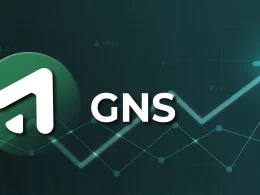The cryptocurrency market has been a wild ride for investors, with the price of different tokens going up and down in unpredictable ways. One of the newest tokens on the scene is AZERO, and it has caught the attention of many crypto enthusiasts. In this article, we’ll take a closer look at what AZERO is and how its price has been performing.
What is AZERO?
AZERO is a blockchain-based platform that provides a range of decentralized financial (DeFi) services. It uses the Proof-of-Stake (PoS) consensus mechanism, which allows token holders to participate in the network by staking their tokens and earning rewards. The platform has several features, including a decentralized exchange (DEX), liquidity pools, and yield farming.
One of the unique features of AZERO is its integration with other blockchain networks, such as Ethereum and Binance Smart Chain. This allows users to transfer assets between different networks and take advantage of the features of each network. For example, users can stake their AZERO tokens on the AZERO network and then use the rewards they earn to participate in Ethereum-based DeFi protocols.
AZERO Price Performance
AZERO was launched in February 2022, and its price has been on a rollercoaster ride since then. Initially, the price was around $0.10, but it quickly rose to over $2 in a matter of weeks. However, like many other cryptocurrencies, the price of AZERO is highly volatile, and it has experienced significant fluctuations since then.
As of March 15, 2023, the price of AZERO is $0.67, down from its all-time high but still significantly higher than its initial price. The market capitalization of AZERO is around $70 million, and the total supply of tokens is 100 million.
Factors Affecting AZERO Price
Like all cryptocurrencies, the price of AZERO is affected by a range of factors, including market sentiment, adoption, and competition. Here are some of the key factors that are likely to influence the price of AZERO in the coming months:
- Market Sentiment: The cryptocurrency market is highly sensitive to news and events, and any negative news can cause the price of AZERO to fall. Conversely, positive news, such as new partnerships or features, can boost the price.
- Adoption: The success of any cryptocurrency depends on its adoption by users and developers. If AZERO can attract a large user base and support from developers, it is likely to see a significant increase in price.
- Competition: The DeFi market is highly competitive, and there are many other platforms that offer similar services to AZERO. If these platforms are able to attract more users and developers, it could negatively impact the price of AZERO.
Conclusion
AZERO is a promising platform that offers a range of DeFi services and has unique features such as integration with other blockchain networks. While its price has been highly volatile, it has shown significant growth since its launch. Whether the price of AZERO will continue to rise or fall depends on a range of factors, including market sentiment, adoption, and competition. As with all cryptocurrencies, investors should approach AZERO with caution and do their research before investing.







